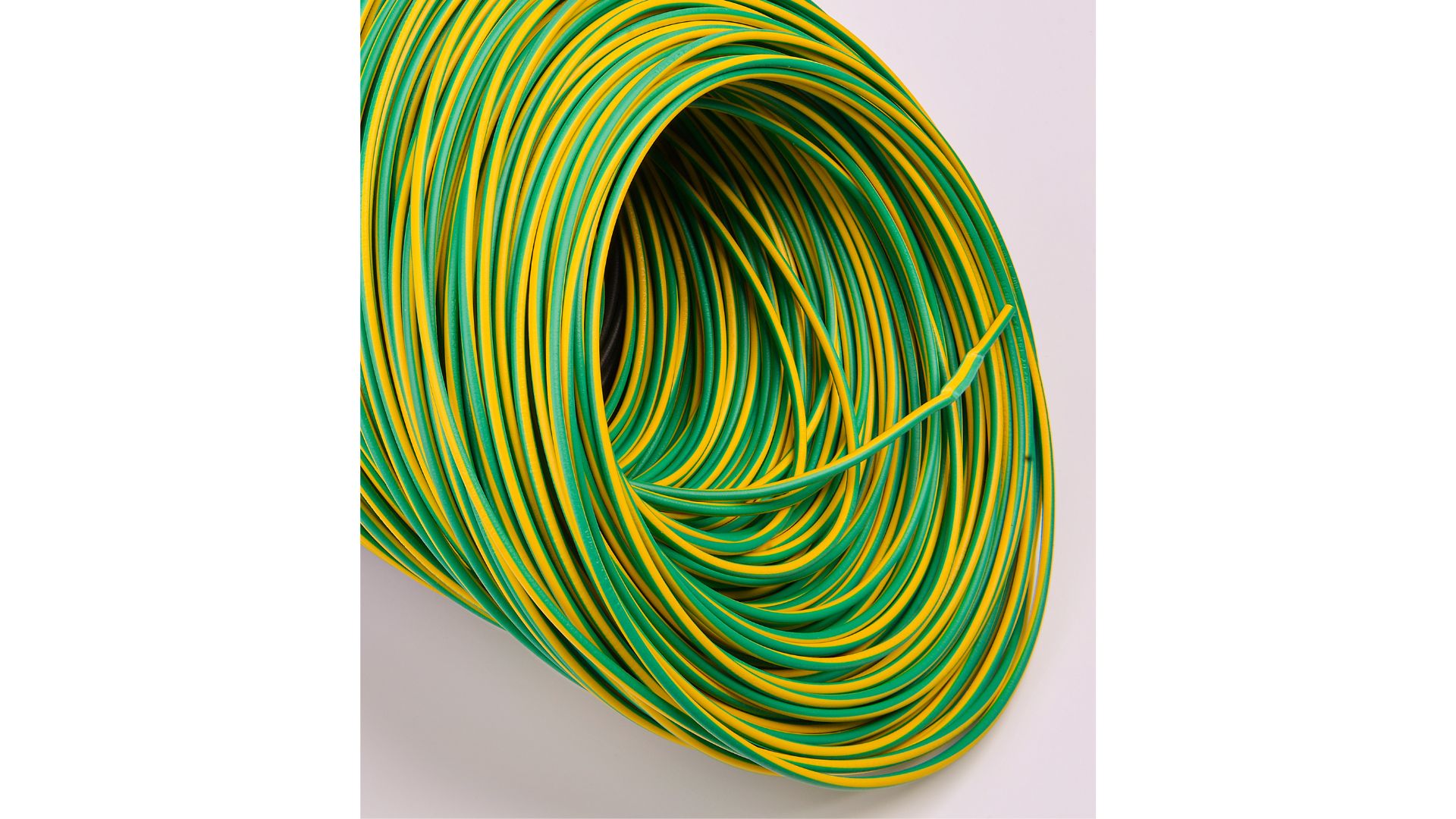If you’ve noticed yellow stripes on your green wire, but you’re accustomed to electrical lines with solid colors, no one will blame you for expressing confusion. The guide below will tell you everything you need to know.
Green Wire With Yellow Stripe Meaning
Green-yellow is just as synonymous with the protective ground as ‘bare’ and ‘green.’ However, many people that come across the term ‘Green-Yellow’ expect to see a wire with green and yellow sections.
Every time you see this combination, you should know that you have a protective ground on your hands.
But what about speakers?
Speakers are concerned with the polarity. The wires they use are either positive or negative. Red is ‘Positive’ and black is ‘Negative.’ Yellow is ‘Positive,’ and green is ‘Negative.’
But what about green with a yellow stripe? This is the earth ground (AC Wiring). It is worth noting that green doesn’t always feature a yellow stripe. Sometimes, the conductor in question is simply green.
If that sounds confusing, don’t worry. You don’t have to memorize this information. Your speakers will include a manual showing you how to install all the wires. This is good because manuals are usually up to date.
They won’t steer you wrong. If the color codes have changed, and your country’s instructions differ from the information in the manual, follow the manual. The manufacturers know what they are talking about. The wires will perform the function stated in the manual.
Its Purpose
If you’ve ever wondered why some countries use green with a yellow stripe instead of solid green or yellow, the stripes play an important role. Regulators couldn’t trust green to stand the test of time.
Eventually, the color faded, especially when exposed to harsh elements. It would mimic blue or yellow after a while, which created confusion for people. Regulators responded by adding a yellow stripe.
Even if the colors faded, the stripe was a clear indicator that you had a protective ground on your hands. At the very least, people were less likely to confuse a faded wire with a stripe for a conventional blue or yellow line.
What Is The Use Of Green Wire Yellow Stripe?
The ground wire adds a defensive mechanism that prevents fire and electrocution. The average circuit has three primary wires:
- Black – This is the hot wire. Some circuits use red. Others have both black and red to indicate the presence of two hot wires. The hot wire brings the current to the appliance you want to run. It is the most dangerous line because it always has a current. Therefore, touching it with your bare hands can lead to death, depending on the voltage.
- White – This color is the neutral line. It sends the current back to the source. The neutral line is dangerous because it also carries a current. So long as power travels from the panel along the black/red wire, it must go back to the panel through the white or grey conductors.
- Ground – Green/green-yellow/bare wire is a shock absorber because it discharges the current safely.
As you can see, the green wire with a yellow stripe is the most critical component of a circuit. You can run your appliances without it, but the practice is dangerous. On most days, the protective ground is safe because it has nothing to do.
It only becomes active when things go wrong. For instance, if a fault occurs, the ground will pull the current away from your appliance’s metallic shell. For the longest time, protective grounds were optional.
Some people ignored them because it was cheaper to rely on two wires. But that is no longer the case. Every structure built today must offer a ground wire. This is the only way to prevent loss of life and destruction of property in the event of a surge or short circuit.
If you don’t have a wire, you can’t use the grounding mechanisms that many powerful appliances provide. You can identify grounding by looking for the third prong on the device’s plug. That third prong won’t help you if your three-slot outlet is connected to an ungrounded circuit.
Unfortunately, adding a grounding wire to an older home is not cheap. You can expect to spend thousands of dollars. Most contractors will saddle you with hefty fees because this task is labor-intensive.
Such projects are not always necessary. Many jurisdictions will permit you to live in a home without grounding if the house was built before grounding became mandatory. They may permit you to get away with using GFCIs.
How To Identify A Positive & Negative Wire?
A multimeter will tell you. It has two probes. Attach a probe to each wire and use the alligator clips to hold them in place. What do the readings say? Don’t focus on the number. Pay attention to the polarity. Can you see a plus or minus sign? This will tell you the polarity.
You don’t need a multimeter if your wires have colors and stripes. The color codes will tell you the polarity. But what if the colors faded? This happens with the passing of time or because you expose the cables to harsh elements. In such scenarios, a multimeter is the only solution.
Related Post:

